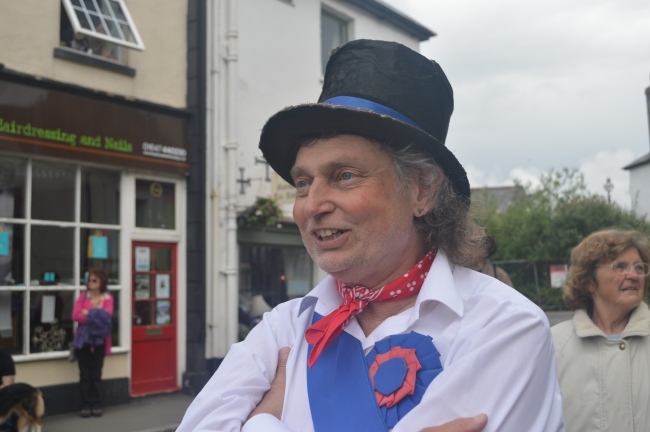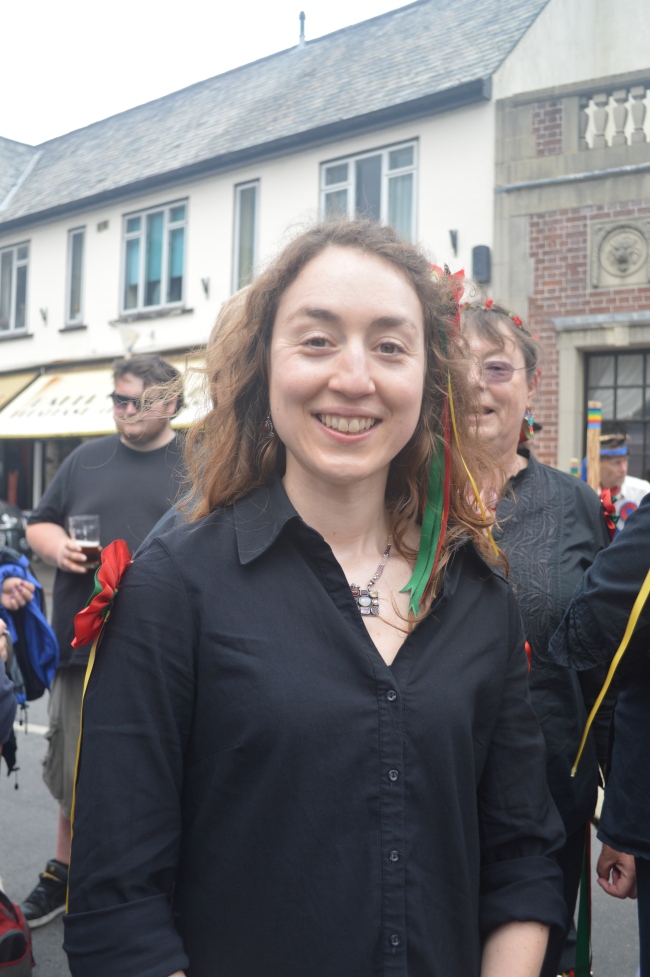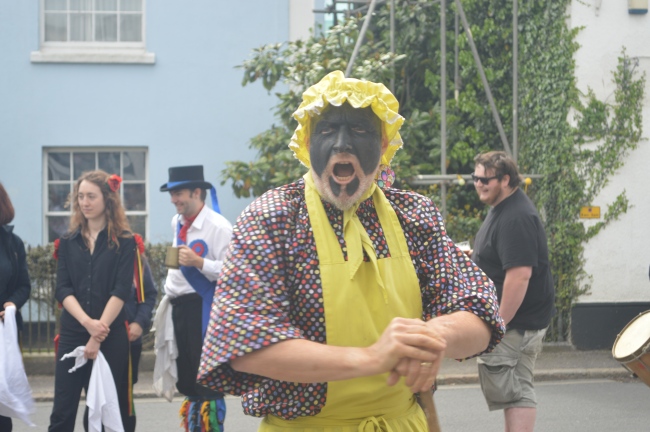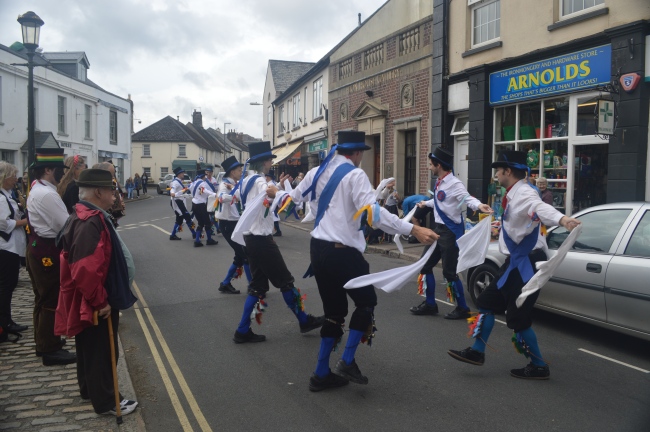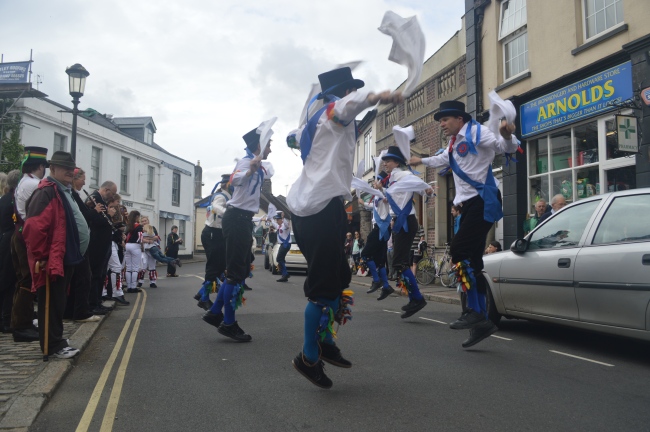I had my hand on the door handle of the Antiquarian Book Store in Moretonhampstead village. In a moment, I would be lost among my dear friends, the arcane tomes and dusty volumes of local history and regional literature. My thumb was on the latch. I pressed down. It gave way under my pressure. The place was open (a rarity, I was told). The door cracked open. The books awaited my gentle touch and curious eye.
I was stopped by someone standing in the Town Square, yelling.
“They’re here!”
“The Morris Dancers have arrived.”
I pulled the door shut and went to join my wife. We were actually waiting for the dancers, but we told they might be late…or not show up at all. That was when I headed to the bookstore to spend some precious moments browsing.
Please, those of you who are aware of this type of dancing, don’t leave now. I need to explain a few things to the others who may not be aware of this…this unique type of very entertainment.
At some vague date in British history, a couple of Englishmen decided to tie bells around their ankles, put on odd outfits, take some sticks or handkerchiefs and hop around to the accompaniment of an according or concertina or perhaps even a trombone and fiddle. They must have enjoyed themselves, because the tradition lives on to this day. There are hundreds of Morris Dancing troupes throughout the British Isles.
A fair question to ask at this point is exactly how old is this tradition? Well, like nearly everything in British history, it can be traced back to either the Neolithic Age, the Bronze Age or sometime in 1972. The fog of history shrouds so many important aspects of the history of this wonderful island. Who would have guessed that the bones of Richard III would be unearthed under a car park in Leister in 2012?
See what I mean?
Well, from what I’ve been able to piece together from Wikipedia, what follows is the essential facts relating to Morris Dancing. I hope I make your day.
Morris dancing has been linked to similar activities practiced by the Spanish Moors–Moorish Dancing–forms of which are still practiced in the Basque country of Spain.
Henry VIII was said to be an avid fan of the dance and could put his own spin on the hops. The first mention of the dance was made in 1448. In 1600, a Shakespearean actor, one William Kempe, danced his way from London to Norwich. Apparently the authorities in Norwich actually determined the guy was sane and he was allowed to go free after he arrived.
I have found references to six different styles of Morris Dancing. I’m sure there are Morris Dancing scholars out there could cite much more information than I. Happy Googling.
- Cotswold style–heavy use of wooden sticks and handkerchiefs (wavers).
- North West Morris–somewhat more military and processional in practice.
- Border Morris–a simpler and looser style (of hopping) and use of blackface to represent coal miners.
- Longsword/Yorkshire–use of long wood or metal swords.
- Rappa–don in Northumberland using sticks and swords.
- Molly Dancing–where one dancer dresses up as a woman (Molly). This dance is usually performed for the first time each year on Plough Monday. This is the start of the English agricultural season. It’s the 1st Monday after Twelfth Day (Epiphany).
So, there it is. I must say this: watching the dancers and listening to the concertina and hearing the bells go giggle-gangle, I find it soothing and compelling.
One can get drawn into the movement and the music and this, coupled with the ancient buildings and the take-your-breath-away beauty of Dartmoor, or the Cotswolds or Dorset, you are taken to a different time.
And who doesn’t relish a different time? I do.
By the way, when the dancers withdrew into the local pub, I went back to the Antiquarian Book Store.
It was closed.
A Morris Dancer.
She danced just for me. (I wish).
The “Leader”.
Dorset style.
Arriving.
Hopping.
